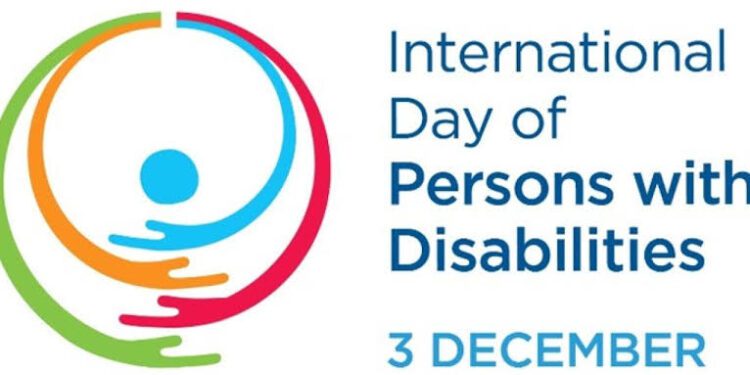Today, the world celebrates the International Day of Persons with Disabilities (IDPD), an important occasion to highlight the rights, dignity, and empowerment of individuals with disabilities. Observed annually on December 3rd, this year’s theme, “Amplifying the Leadership of Persons with Disabilities for an Inclusive and Sustainable Future,” urges society to empower disabled individuals to take leadership roles and drive positive change towards a more inclusive, equitable world.
While the world has made significant strides in raising awareness and improving accessibility, the reality for millions of disabled individuals remains one of exclusion, particularly in terms of employment, education, and social participation.
The History of International Day of Persons with Disabilities
The United Nations established this day in 1992, with the aim of promoting an inclusive world for all, irrespective of physical, intellectual, sensory, or developmental differences. However, its roots can be traced back to 1976 when the UN declared 1981 as the International Year of Disabled Persons, focusing on rehabilitation, equal opportunities, and disability prevention. Since then, numerous global initiatives have paved the way for recognizing the importance of addressing the challenges faced by people with disabilities. Today, over 1 billion people, or 15% of the global population, live with some form of disability.
The Theme of International Disability Day 2024
The theme for International Disability Day 2024, “Amplifying the Leadership of Persons with Disabilities for an Inclusive and Sustainable Future,” emphasizes the critical role disabled individuals play in decision-making processes. Their leadership is vital in achieving sustainable development, as outlined in the 2030 Agenda for Sustainable Development. This theme aligns with initiatives like the Pact for the Future and the upcoming 2025 World Summit for Social Development, ensuring that persons with disabilities are included in shaping global policies and progress.
Accessibility Challenges: A Global Snapshot
Despite ongoing global efforts, persons with disabilities continue to face significant challenges in their daily lives. Accessibility remains a major barrier, with over 70% of the built environment being inaccessible to people with mobility impairments. In addition to physical barriers, technology and education often present limited opportunities. In many parts of the world, including Pakistan, individuals with disabilities still struggle to access quality education, healthcare, and employment opportunities.
Pakistan, home to over 15 million people with disabilities, has made strides in disability advocacy, but gaps remain. Accessibility issues, from public infrastructure to digital platforms, continue to hinder the full participation of disabled individuals in society. Approximately 6% of Pakistan’s population lives with disabilities, and the country faces challenges in implementing inclusive policies and creating accessible environments.
The Struggle for Equal Opportunities
This day is not merely about raising awareness; it’s a call for action. Persons with disabilities worldwide continue to face stigma and social exclusion, which directly impacts their chances of finding jobs. The lack of accessible public spaces, insufficient disability-friendly technologies, and discriminatory hiring practices further marginalize this group. For instance, in Pakistan, a country where over 6% of the population is estimated to live with a disability, the situation is dire. Many individuals are either confined to homes or left without
Celebrations and Initiatives Across the World
Globally, this day is marked by a series of events aimed at celebrating achievements and promoting inclusion. From conferences to cultural performances, these activities spotlight the incredible potential of persons with disabilities. In India, the National Disability Summit showcases innovations in education, healthcare, and employment. Meanwhile, in Nigeria, local organizations are conducting awareness campaigns to combat stigma and encourage stronger legislative protections for persons with disabilities.
The Role of Technology in Empowering Lives
Technology has become a game-changer in empowering people with disabilities. Adaptive technologies such as screen readers, voice-activated assistants, and mobility aids have transformed lives. Over 100 million people globally benefit from assistive technology, which facilitates independence and integration. Major tech companies like Microsoft with its AI for Accessibility program, and Google through Project Euphonia, are spearheading innovations to create inclusive solutions for disabled individuals.
However, advocates stress that these innovations must be accessible and affordable to ensure no one is left behind. In countries like Pakistan, where access to technology remains a significant challenge, initiatives focused on increasing availability are critical for ensuring that all people with disabilities can benefit from these advancements.
Inclusion in Action: What Needs to Be Done
In addition to improving physical accessibility, efforts must focus on creating inclusive policies, particularly in the labor market. Governments, businesses, and non-profits must step up to ensure equal employment opportunities for disabled individuals. This involves implementing disability-inclusive practices, such as adjusting workspaces to accommodate different impairments, offering specialized training, and fostering workplace cultures that celebrate diversity rather than shy away from it.
In Pakistan, many organizations have been advocating for better policies and greater awareness. Yet, progress remains slow, and the need for widespread societal change is more urgent than ever. The World Bank reports that addressing the barriers disabled individuals face in Pakistan could significantly contribute to reducing poverty and driving economic growth.
A Shared Responsibility: Moving Forward Together
International Day of Persons with Disabilities 2024 calls for a collaborative approach to inclusion. Governments, businesses, and communities must prioritize accessibility in urban planning, digital services, and healthcare systems. By eliminating barriers and fostering empathy, society can move closer to achieving true inclusion.
This day is not only about celebrating resilience but also about taking action. It is a reminder that building an inclusive society requires us all to contribute—whether it’s through amplifying advocacy, supporting innovative solutions, or challenging societal stereotypes.
Related Stories:
International Day for the Elimination of Violence Against Women 2024
















